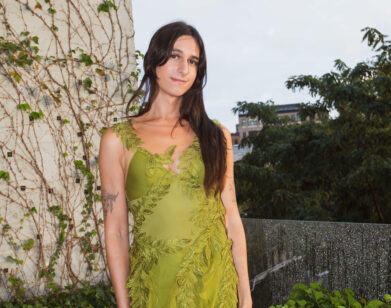The El Chapo Trial, a Must-WatchTrue Crime Event of the Season,Silently Approaches a Finale

Defense attorney Eduardo Balarezo, who is representing Joaquín”El Chapo” Guzmán, arrives at Federal Court on Monday. AP Photo/Mark Lennihan.
Experiencing the El Chapo trial from outside the Brooklyn Federal Courthouse is, like other things, a bit like taking a shower with a raincoat on. The operatic intrigue is teasingly palpable, yet wholly distant. Currently, a jury is sequestered in search of a verdict in downtown Brooklyn, on the border of Brooklyn Heights — an otherwise uneventful land of Babybjörns and poodle hybrids — where a flotilla line of tripods are lined up along the barricades down Cadman Plaza East. Here, the audience of cameramen and reporters are awaiting the final reveal, a thunderbolt ending to the months-long celebrity saga judicial drama of the Mexican drug lord Joaquín Guzmán in the form of a verdict or a flash appearance from the kingpin’s Instagram-famous wife, former beauty queen Emma Coronel Aispuro. They dawdle with coffee cups in tow, parking on benches and chatting amongst themselves — many in rapid fire Spanish. The Mexican reporters, it should be said, are the best dressed.
“These things are always a lot of waiting,” one cameraman told me, adjusting his equipment in anticipation of The Finale to this reality show of epic proportions. Another, from Telemundo, has been camped out well before sunrise. Did he catch a glimpse of any delectable notoriety? Nada. Just lawyers.
With the low hum of distant construction work and the intermittent giggling of kids digging sticks into the soil, the signature Brooklyn quietude outside the courthouse is disorienting, if not eerie. It’s a calm droll in the midst of a news quake seemingly conjured up as fodder for a Vice HBO special; sex, drugs, elaborate escape plans through hidden tunnels, motorcycles, and murder: the trial is the ideal storm of global intrigue. (As Jessica Loudis noted for Artforum, Vice is always first in line.) A stream of joggers run by. Two kids battle over a soccer ball on the turf of the World War II memorial. A U.S. Marshal strolls down the sidewalk with a yellow Lab. If not for his tactical vest, he could be mistaken for any of the Brooklynites enjoying the uncharacteristically (though increasingly common) mild days of mid-winter. The vest, that icon of American militarism, doesn’t seem to take anyone aback. The global spectacle has cemented itself in the public life of this corner of Brooklyn, its sheer flashiness reduced to background noise, buried among the progressively surreal headlines of the day. It’s even spread to Bushwick.
A presumably retired passerby approaches a cameraman in repose as he ambles through the tree-lined plaza with a toddler, seemingly unbothered (or perhaps, all too familiar with) the media frenzy waiting to happen. “At least,” he said, in passing, “you’re getting paid.”






